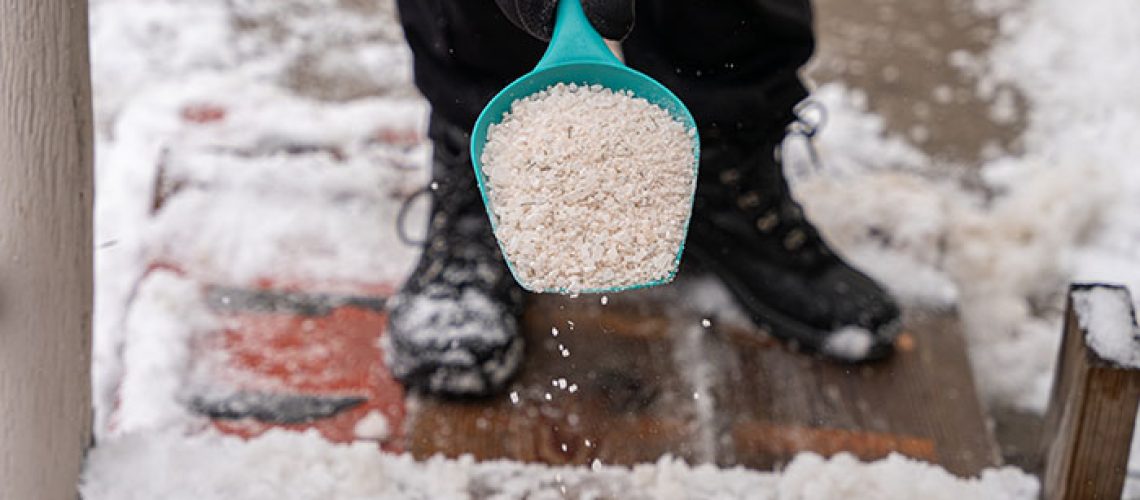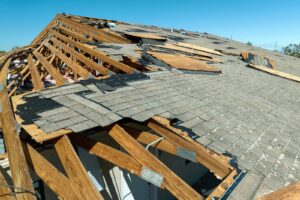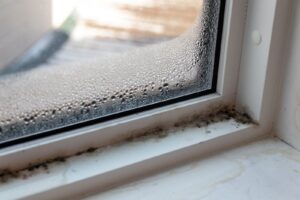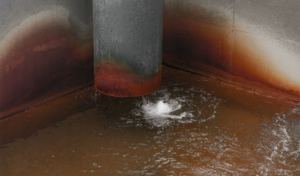Spreading rock salt is an inexpensive and effective method of melting snow and ice to keep walkways and roads safe for everyone. The Utah Department of Transportation (UDOT) alone uses more than 194,000 cubic yards of salt every year to keep the roadways free from ice. That’s over $5 million spent on rock salt ice melt.
It’s clear that using rock salt for snow has its benefits. It lowers the freezing point of the snow and ice on the roads so they melt faster, preventing black ice and other hazardous driving situations. It has the same benefits on sidewalks and driveways, keeping residents safe from slip-and-fall accidents.
But surely the massive amount of salt added to the roads and walkways every winter has an effect on the environment, right? Here’s everything you need to know.
Rock Salt vs. Ice Melt
Many people think rock salt ice melt is the only de-icing product out there. But if you’ve ever walked into a home improvement store to pick up a bag of salt, you’ve likely seen a wide selection of products to melt the ice. In reality, ice melt and rock salt are very different products.
The most common compound used to pre-treat sidewalks and roads is rock salt ice melt, made from coarse table salt. Other chemicals can be used to make different kinds of ice melt. Each serves different purposes and has varying pros and cons. Here’s a look at the differences between the two products.
Rock salt is known as halite, a chemical composition made up of sodium chloride. This is the same thing we use for standard table salt, but the kind we use to melt ice hasn’t been purified and isn’t safe to eat.
Rock salt is often applied to roads as a brine, but individuals typically sprinkle it out on sidewalks and driveways in its coarse rock form. It lowers the freezing point of the water, causing ice to melt and preventing it from refreezing in the future.
Ice melt also contains sodium chloride, but it typically includes other additives like magnesium chloride and calcium chloride. These additives are usually present in the form of pellets that look like sand. While rock salt for snow is frequently applied during and after snowstorms, ice melt is most effective when applied before a storm hits. This prevents ice from forming in the first place.
Ice melt comes in a variety of compounds. The three most common are listed below:
- Calcium Chloride – This type of ice melt is extremely effective at very low temperatures, whereas others might not be as useful. It’s ideal for melting ice during cold spells and harsh winters.
- Magnesium Chloride – This may not be the most effective compound for melting ice, but it’s the most environmentally friendly option on the market. Home and business owners who are worried about rock salt’s effect on the environment should use ice melt containing magnesium chloride.
- Blended Ice Melts – Many commercially available ice melt compounds contain calcium, magnesium, and sodium chloride in a blended form to reap the benefits of each type of chemical.
Now that we’re familiar with the differences between rock salt and ice melt, let’s look at the way each of them impacts the environment.
Environmental Effects of Rock Salt
Rock salt is used so frequently on roads and walkways because it provides traction for pedestrians and vehicles while simultaneously melting the ice and preventing further ice formation. But it can have a damaging effect on concrete and pavement.
Salt is an extremely corrosive substance. This can lead to spalling in concrete driveways and sidewalks, and can also damage asphalt roads. It can also cause rust to form on vehicles, which is why it’s so important to wash your car after driving on roads that have been treated with rock salt for snow.
In addition to damaging roads and walkways, salt can negatively affect your landscape and the wildlife around you. It has been known to kill wildlife, contaminate drinking water, and increase soil erosion, according to the Environmental Protection Agency. It may also be dangerous to your pets if ingested.
Salt presents its most damaging effects when it enters waterways. Freshwater lakes and streams are filled with wildlife and large amounts of sodium chloride can be introduced in the spring runoff. This can lead to toxic levels of salt in the freshwater, damaging the ecosystem irreparably.
Environmental Effects of Ice Melt
Most forms of ice melt have similar environmental effects to salt, with a few key differences. It is known to be corrosive to asphalt and concrete, but it has proven to be less damaging to vehicles than salt is. Vehicle damage from ice melt may still occur, but the effects are less extreme and take longer to develop.
Magnesium chloride ice melt is known to be safe for lawns and landscapes, and many are pet-friendly (make sure to read the label and follow all safety instructions). Unfortunately, this type of ice melt isn’t used as often because it’s more expensive than other options.
As awareness increases about the environmental effects of various types of ice melt, more work is being done to come up with a safe solution to keep roads, driveways, and sidewalks safe without harming the environment.
Restoremasters Has You Covered During Winter Storms
Winter storms can bring hazardous levels of snow and ice to your home and property, and rock salt might not be enough to keep your home safe. If you find that your home needs some restoration after a winter storm, Restoremasters has you covered! Our team of restoration experts will get you back on track in no time at all.
Heavy winter storms can be stressful, especially when they’re accompanied by icy conditions, flooding, or wind damage. Let our experienced team take that weight off your shoulders. We are located in Sandy and happily serve property owners in the Salt Lake Valley and Utah Valley with their restoration needs. Contact us today to get more information!







